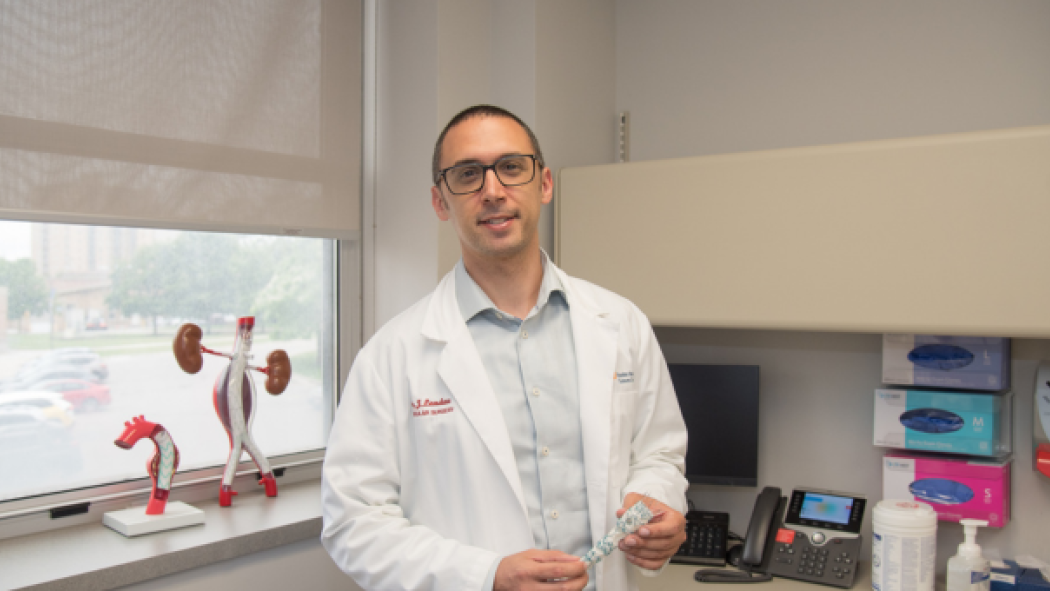
LHSC Vascular Surgeon, Dr. John Landau is pictured with a sample of the Terumo Treo Fenestrated aortic stent graft platform
July 23, 2025
London Health Sciences Centre (LHSC) is the first in Canada to perform a fenestrated endovascular aneurysm repair (FEVAR) using the Terumo Treo Fenestrated aortic stent graft platform – a custom endovascular graft that is fitted to the unique anatomic needs of the patient.
“While custom aortic aneurysm devices have been available for use, this device-based first is significant because it makes another custom platform option available to both Canadian surgeons and their patients,” says Dr. John Landau, Vascular Surgeon at LHSC. “Greater choice drives innovation and ultimately leads to higher quality medical devices, which is a win for everyone.”
Known as silent killers, aortic aneurysms occur when a blood vessel gets weak and bulges out. This often happens with little to no signs or symptoms for patients. What makes it dangerous is that much like when a balloon gets too much air and might pop, the bulge in the wall of the weakened blood vessel might burst, causing life-threatening internal bleeding.
To fix this and prevent a rupture from occurring, a vascular surgeon will perform a procedure called a fenestrated endovascular aneurysm repair. This is a minimally invasive procedure that is completed using small tubes, called catheters, to guide surgical tools inside the blood vessel using x-ray guidance. The fenestrated part of the procedure means the aortic stent has small holes, called fenestrations, which allow the device to extend beyond the major blood supply to the kidneys and abdominal organs to exclude blood flow from the aneurysm and prevent it from rupturing while also preserving blood supply to these vital organs.
“The use of endovascular grafts makes a significant difference for patients, as they involve less risk than traditional open surgery, require smaller incisions, and have a much shorter recovery time,” says Dr. Landau. “With a successful first surgery using this device, we’ve now added it to our complement of potential options that can be considered for the 30 to 40 patients we see each year for whom a standard graft won’t work. As a program, we’re also incredibly proud, as this first cements our ongoing commitment to being at the forefront of offering the highest quality individualized care for our patients.”
The Canadian first was performed by Dr. Landau on October 17, 2024.